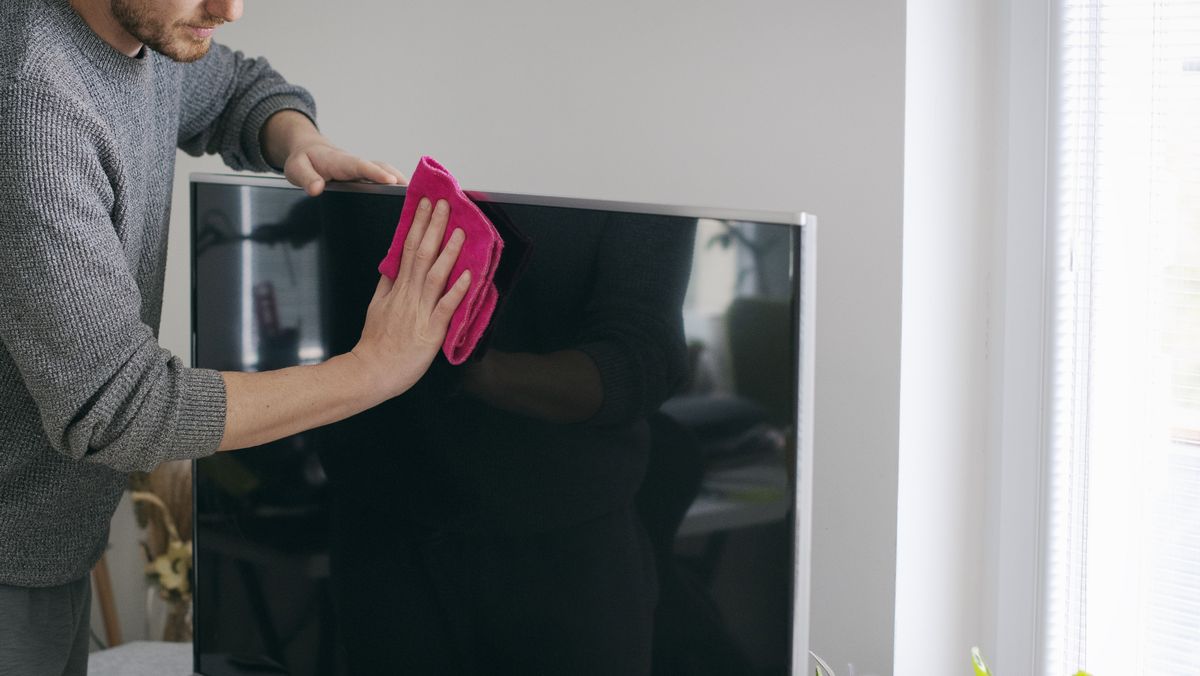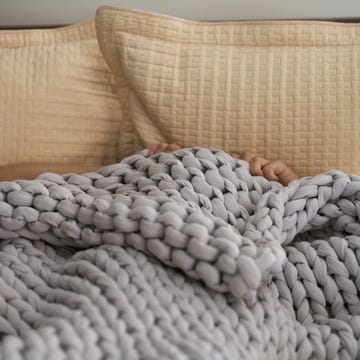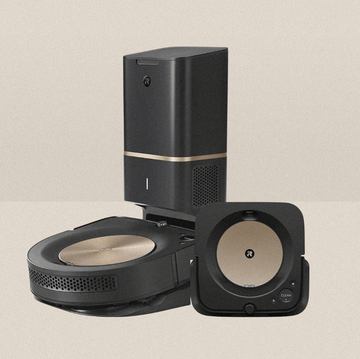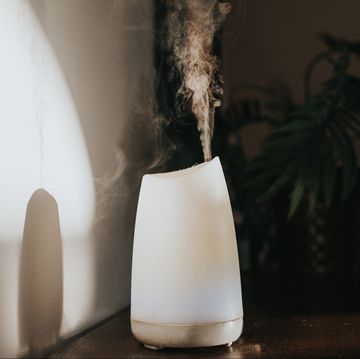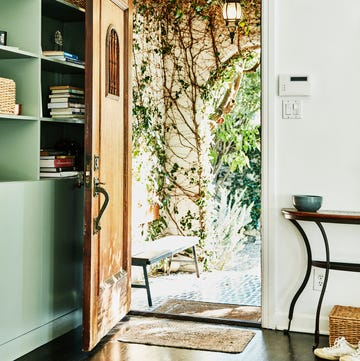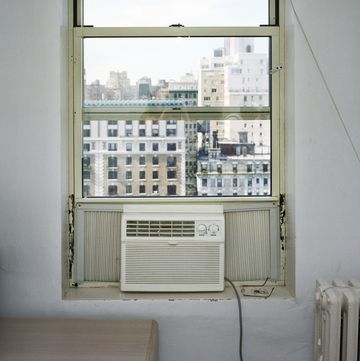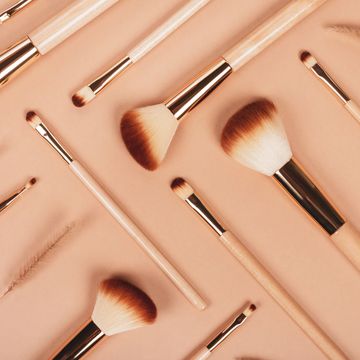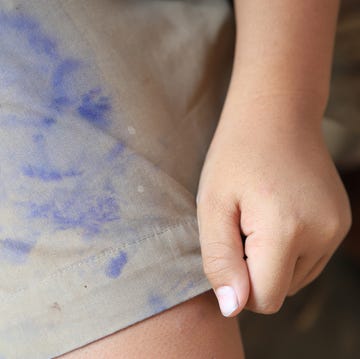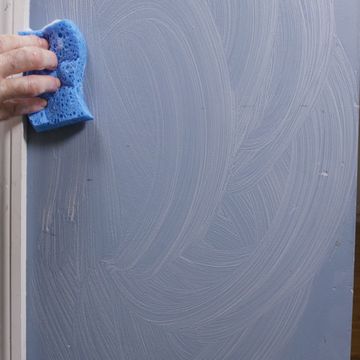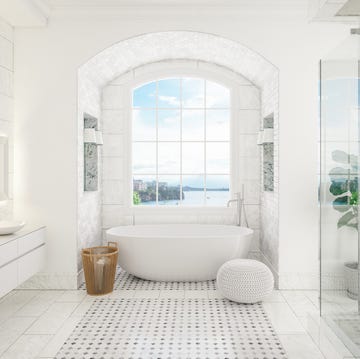It's essential to have a TV screen that's free of dust, dirt, and smudges. Whether you're binge-watching old episodes of Fixer Upper or tuning in to Netflix to watch your favorite episode of Beef, you need the best picture quality possible. There’s nothing worse than missing a pivotal plot moment because a smudgy fingerprint distracted you.
We've decided to pull together a step-by-step guide to ensure your TV is streak-free and spotless in no time. And while there are many different types of TVs on the market with various sensitivity levels, there's one universal way you can clean them all: with a microfiber cloth. Ahead, learn how to properly use a microfiber cloth on your TV screen—and make note of what to avoid.
For this project, the only thing you really need is a microfiber cloth. For some TV screens, distilled water can help. It's important to remember less is more when cleaning your screen. A household cleaner or any harsh chemical can damage your television.
Materials:
- Microfiber cloth
- Distilled water (if necessary)
Step One: Review Manufacturer Guidelines
Although you may feel like you know exactly what you're doing when cleaning your screen (it's just glass, right?), double check your manufacturer's guide to get the proper care instructions. And remember, if you don't have the paper manual handy, you can find care instructions on the manufacturer's website.
Step Two: Unplug the TV
Once you've reviewed the cleaning guide for your TV, grab your remote, turn off the television screen, and unplug the device. Since you're dealing with an electrical device, it's always smart to shut off the electricity for safety before you clean.
Step Three: Grab a Microfiber Cloth
A soft, lint-free microfiber cloth is different from a dishcloth or hand towel. It's made up of fine synthetic fibers from polyester and nylon and is extremely thin. It can be used wet or dry to clean many different types of electronic devices. If you have a large television, you may need a few microfiber cloths or a microfiber mop with an extension pole for the job.
Step Four: Wipe in One Direction
To avoid creating new smudges or streaks on the screen, wipe the screen with the microfiber cloth in one direction. It doesn't matter which direction, just that you don't backtrack and redeposit any dirt. Turn over the cloth as you work to ensure you use clean areas of the cloth.
Step Five: Wipe in TheOpposite Direction
Now repeat the cleaning process in the other direction. If you worked left to right before, work right to left now. By tackling each direction in a separate step, you avoid adding streaks to your TV screen.
Step Six: Spot Clean
If your screen still doesn't look spotless, it's time to do a deep clean of the television's surface. Mist distilled water onto your microfiber cloth and gently spot clean to remove stubborn smudges.
Additional Tips for a Spotless Screen
Avoid using pretreated dusting cloths that might leave an oily finish on the screen. Don't spray any harsh chemicals directly onto the screen, either. Remember to always double check the manufacturer’s guidelines for appropriate cleaning instructions before you start.
Love shopping for your home and scoring the best deals? We can help.
Follow House Beautiful on Instagram.

Kelly Allen is the current Associate Editor at House Beautiful, where she covers design, pop culture, and travel for digital and the print magazine. She’s been with the team for nearly three years, attending industry events and covering a range of topics. When she’s not watching every new TV show and movie, she’s browsing vintage home stores, admiring hotel interiors, and wandering around New York City. She previously worked for Delish and Cosmopolitan. Follow her on Instagram.

Angela Belt is the contributing Assistant Shopping Editor at House Beautiful. She's also an interior designer and is the host of her own podcast, The Mood Board. When it comes to design, she's an esteemed expert with some of her work also appearing in HGTV, Better Homes & Gardens, The Washington Post, and more.
